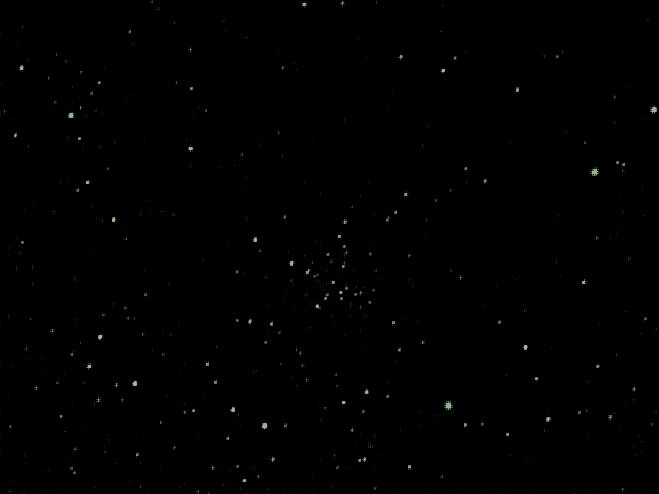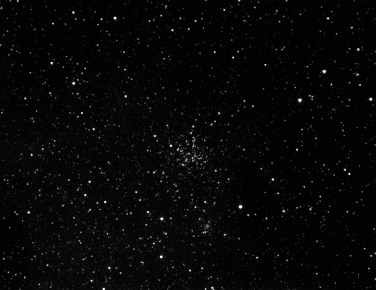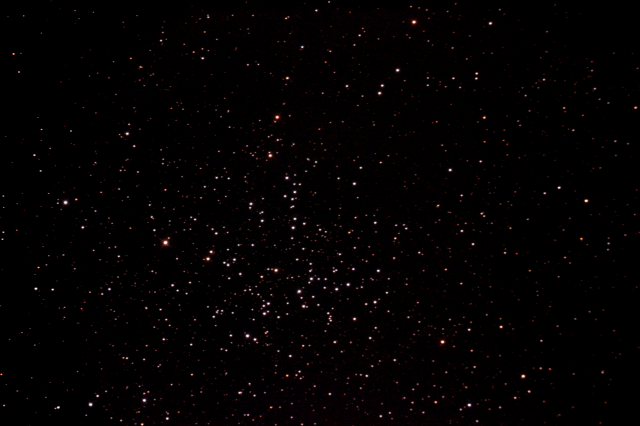

M38, in the constellation of Auriga, was first observed by Giovanni Batista Hodierna. astronomer to the court of Montechiaro, and recorded by him in 1654. However, these notes were not widely publicised at the time and M38 was independently discovered by Le Gentil in 1749 and Messier included it in his catalogue on 25th September 1764. It subtends about 21 arc-minutes in the sky which corresponds to a diameter of about 25 light-years at an estimated distance of 4,200 light-years. It is estimated to be 220 million years old. It lies within the disc of the Milky Way.
 |
M38 captured with my LX200 fitted with a 0.33 focal reducer (focal length 800 mm). The diameter of the cluster is about 21 minutes of arc, and the field of view here is about 20×15 arc minutes. The cluster as a whole has a magnitude of 7.4 which is too faint to be seen with the naked eye, but it can be seen with binoculars. Date and Time: 10th February 2008 19.35 - 21:33 UT Camera: Atik 16ic colour Telescope: LX200 with 0.33 focal reducer Capture: ArtemisCapture. Exposure 4 min. Processing: K3CCDTools. 23 frames stacked, histogram 15-255, unsharp mask 3,0,100 |
||
 |
And here is a wider view captured with my MX716 camera and 135mm SLR lens, which gives a field of view of about 160×120 arc minutes. The cluster is quite small in this picture; if you move your mouse pointer over the image you will see a circle drawn to the appropriate size. Date and Time: 1st December 2012 23:47 - 23:50 UT Camera: Starlight Xpress MX716 binned 2×2 Telescope: 135mm SLR lens Capture: Star_mx7. 20 seconds exposure, 10 frames Processing: RegiStax6. 10 frames stacked. |
||
 |
And here is a closer view taken with a DSLR camera and my RC telescope, which gives a field of view of about 47×32 arc minutes (about the size of the full Moon). Date and Time: 26th February 2019 23:38 - 23:47 UT Camera: Canon 600D Telescope: 8-inch Ritchey-Chrétien Capture: EOS 120 seconds exposure, 10 frames Processing: RegiStax5. 10 frames stacked. |
||
Home Back to DSOs